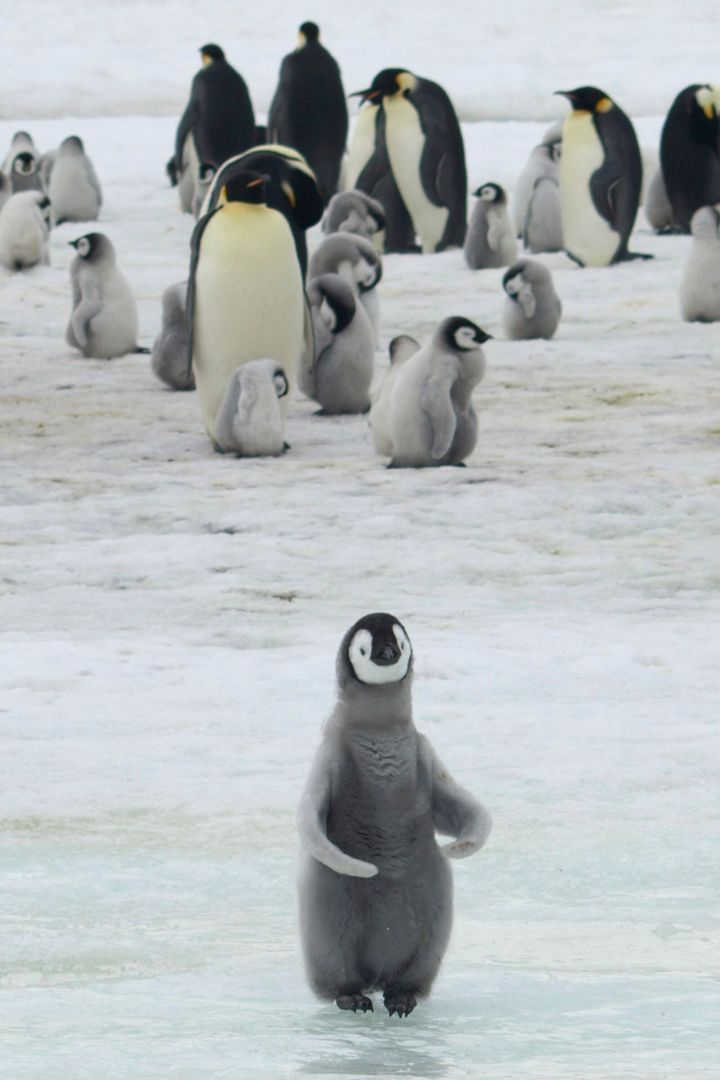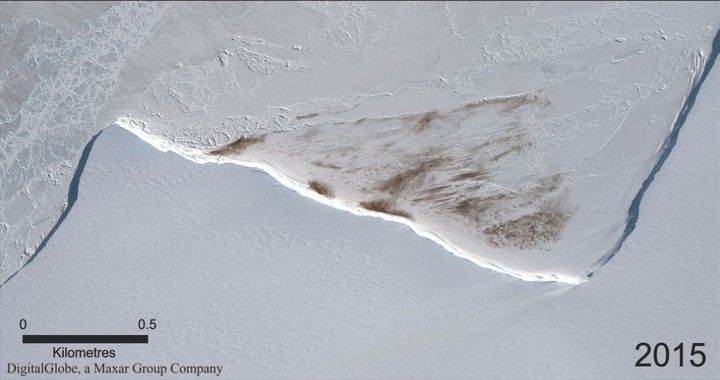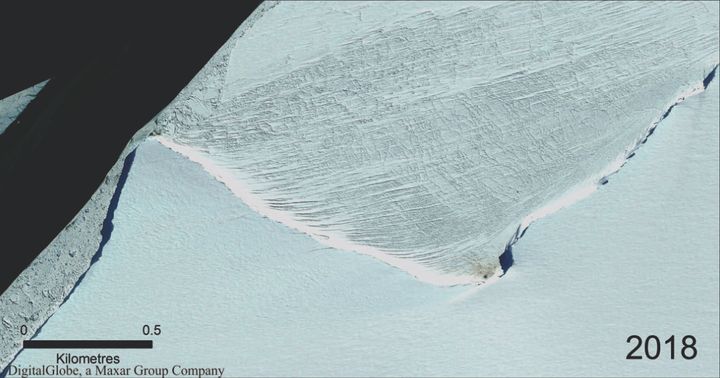Sea ice breakages in Antarctica’s second biggest breeding ground for emperor penguins has lead to the deaths of thousands of emperor penguin chicks.
Virtually nothing has hatched since 2016 at Halley Bay, where usually between 15,000 and 24,000 breeding pairs flock yearly. Scientists are concerned because they had considered it a safe place that should stay cold this century despite global warming.
Emperor penguins need stable sea ice on which to breed, and this icy platform must last from April when the birds arrive, until December when their chicks fledge.

For the last 60 years the sea-ice conditions in the Halley Bay site have been reliable. But in 2016, after a period of abnormally stormy weather, the sea-ice broke up in October, well before any emperor chicks would have fledged.
This pattern was repeated in 2017 and again in 2018 and led to the death of almost all the chicks at the site each season, according to a study in Antarctic Science.
The colony at Halley Bay colony has now all but disappeared, whilst the nearby Dawson Lambton colony has markedly increased in size, indicating that many of the adult emperors have moved there, seeking better breeding grounds as environmental conditions have changed.
“We’ve never seen a breeding failure on a scale like this in 60 years,” said study author Phil Trathan, head of conservation biology at the British Antarctic Survey.
“It’s unusual to have a complete breeding failure in such a big colony.”


Normally about 8% of the world’s emperor penguin population breeds at Halley Bay, Trathan said.
Black-and-white with yellow ears, emperor penguins are the largest penguin species, weighing up to 40 kilograms and living about 20 years.
Pairs breed in the harshest winter conditions with the male incubating their egg.
Scientists blame the sharp decline on climate and weather conditions that break apart the “fast ice” - sea ice that is connected to the land - where the emperor penguins stay to breed.
They incubate their eggs and tend to their chicks - one per pair - on ice. After breeding and tending to the chicks, the penguins move to open sea.
The nearby Dawson-Lambton breeding area, which had been home to a couple thousand pairs, increased to 11,117 pairs in 2017 and 14,612 pairs in 2018, the study said.
While that is encouraging, it does not make up for all that was lost at Halley Bay, Trathan said. “Not everybody has gone to Dawson Lambton yet,” he said.
What is troubling is not that part of the colony has moved to Dawson-Lambton, it is that scientists thought of Halley Bay as a climate change refuge in one of the coldest areas of the continent “where in the future you expect to always have emperors,” Trathan said.
David Ainley, a marine ecologist and penguin expert at the consulting firm HT Harvey & Associates, worried that some people will be more alarmed than they need to be because many of the penguins did not disappear, but just moved.
While not as scary as it may sound initially, with climate change “long term, it’s another question as alternate breeding sites likely will become harder to find,” said Ainley, who was not part of the study.
The study makes sense, and sometimes dramatic environmental change can cause a breeding failure like this, said Stephanie Jenouvrier, a penguin expert at Woods Hole Oceanographic Institution who was not part of the study.
Trathan said a super strong El Nino - a natural cyclical warming of the central Pacific that changes weather worldwide - melted sea ice more than usual and exposed the fast ice to wind and waves, making the breeding home less stable.
He said it is not possible to say yet if human-caused warming - from fossil fuel burning that creates heat-trapping gases globally - is a factor.
A 2014 study by Jenouvrier projected that because of climate change the global population of emperor penguins will likely fall by at least 19% by the year 2100.
Studies by the World Wide Fund for Nature (WWF) indicate populations have declined by up to 50 percent in some places.
Rod Downie, Chief Polar Advisor at WWF said: “While we don’t know for sure if this specific catastrophic breeding failure is linked to climate change, scientists predict that emperor penguin numbers may decrease by up to 70% by the end of this century. The main cause of this is our global climate crisis.
“Emperor penguins are perfectly adapted to survive in the most extreme conditions on earth – yet predictions show their numbers may decrease dramatically on our watch as their world warms. Even in the most remote corners of our planet, there is no hiding from climate change.
“We have the solutions to tackle this global climate emergency, but we have to act now.”
According to the International Union for Conservation of Nature’s (IUCN) last assessment in August 2018, the emperor penguin’s conservation status was “near threatened”.

